Ancient Fijian ‘Sali' War Club with Broad Cheeks Cross-Hatched a Spurred Head and a Serrated Cutting Edge with Notches for Feathers and Shells
An Ancient Fijian ‘Sali' War Club with Broad Cheeks Cross-Hatched a Spurred Head and a Serrated Cutting Edge with Notches for Feathers and Shells
The whole showing considerable signs of generational use
The damaged iron wood edges and flaring butt flange with old smooth patination displaying continual wear and handling
18th Century
Size: 94cm long - 37 ins long
The whole showing considerable signs of generational use
The damaged iron wood edges and flaring butt flange with old smooth patination displaying continual wear and handling
18th Century
Size: 94cm long - 37 ins long
An Ancient Fijian ‘Sali' War Club with Broad Cheeks Cross-Hatched a Spurred Head and a Serrated Cutting Edge with Notches for Feathers and Shells
The whole showing considerable signs of generational use
The damaged iron wood edges and flaring butt flange with old smooth patination displaying continual wear and handling
18th Century
Size: 94cm long - 37 ins long
The whole showing considerable signs of generational use
The damaged iron wood edges and flaring butt flange with old smooth patination displaying continual wear and handling
18th Century
Size: 94cm long - 37 ins long
‘Sali’ refers to the clawed flower of a species of a banana-like plant and these clubs were an extreme variant of the ‘gata’ with broad flattened blade and pronounced spur. The cheeks were carefully carved with geometric patterns instead of being merely roughened. The head was effectively a scythe with the long spur used like the beak of the ‘totokia’ for piercing. It is also thought that the crotched spur was used to throttle victims by pinning them to the ground.
Symbolic embodiments of power, far more attention to detail went into the making of weapons than was required for their technical effectiveness in combat. They were made in enormous variety often with extremely well furnished elaborate surface designs. Although this is an indication of the prevalence of warfare the clubs obviously had more complex roles than just that of a weapon. Their form and level of embellishment signalled the status and rank of their owner and they were also regarded as important exchange valuables. Clubs and spears could be dedicated at temples as Berthold Seeman noted in 1860, ‘In some old temples the various offerings have been tastefully arranged, making the interior of the building look like a great armoury’.
Symbolic embodiments of power, far more attention to detail went into the making of weapons than was required for their technical effectiveness in combat. They were made in enormous variety often with extremely well furnished elaborate surface designs. Although this is an indication of the prevalence of warfare the clubs obviously had more complex roles than just that of a weapon. Their form and level of embellishment signalled the status and rank of their owner and they were also regarded as important exchange valuables. Clubs and spears could be dedicated at temples as Berthold Seeman noted in 1860, ‘In some old temples the various offerings have been tastefully arranged, making the interior of the building look like a great armoury’.
Ancient Fijian ‘Sali' War Club with Broad Cheeks Cross-Hatched a Spurred Head and a Serrated Cutting Edge with Notches for Feathers and Shells
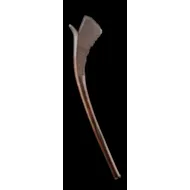
SOLD



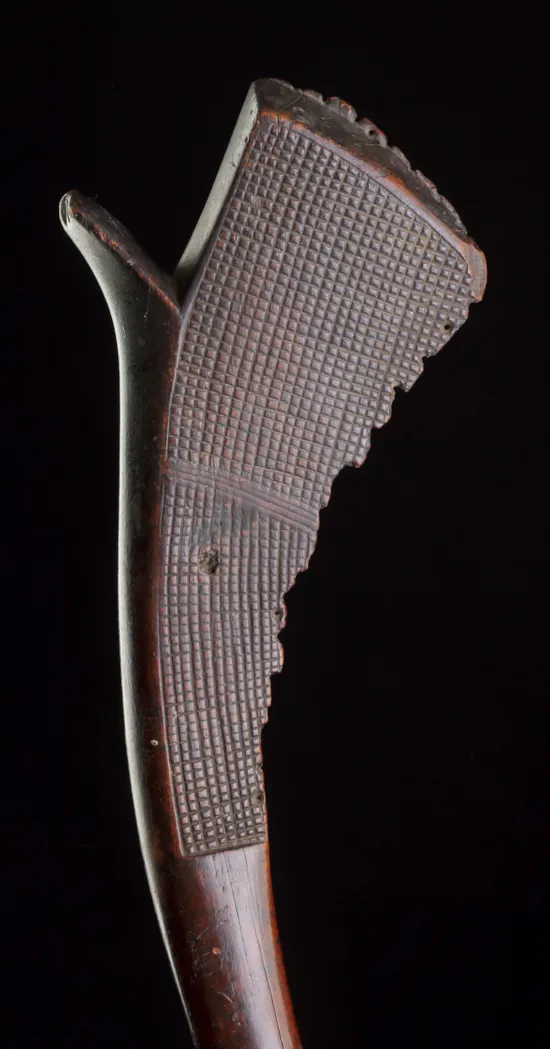
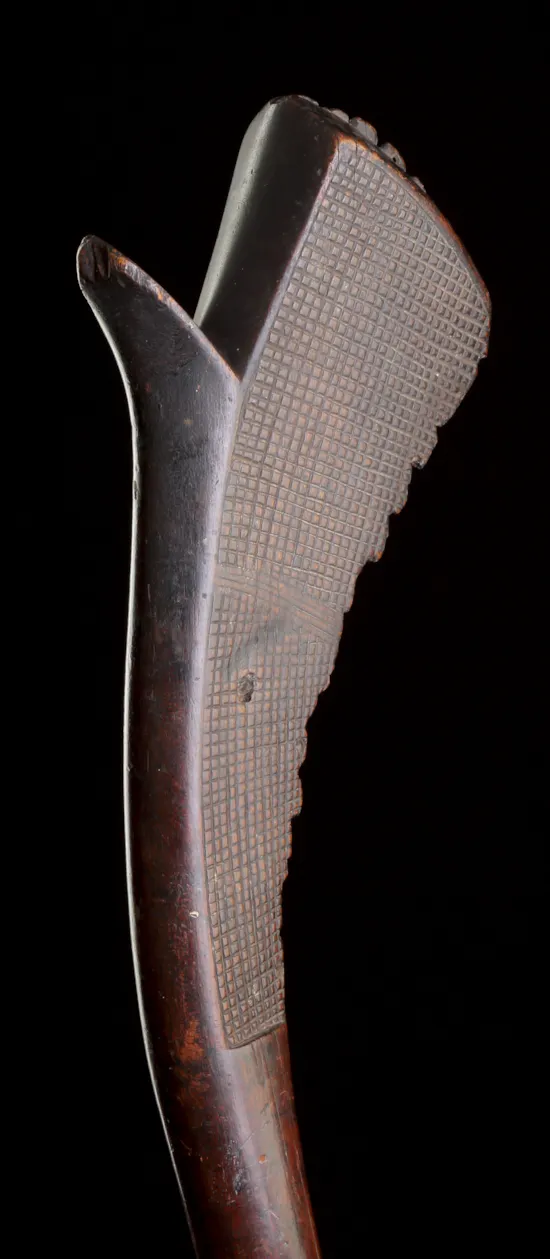

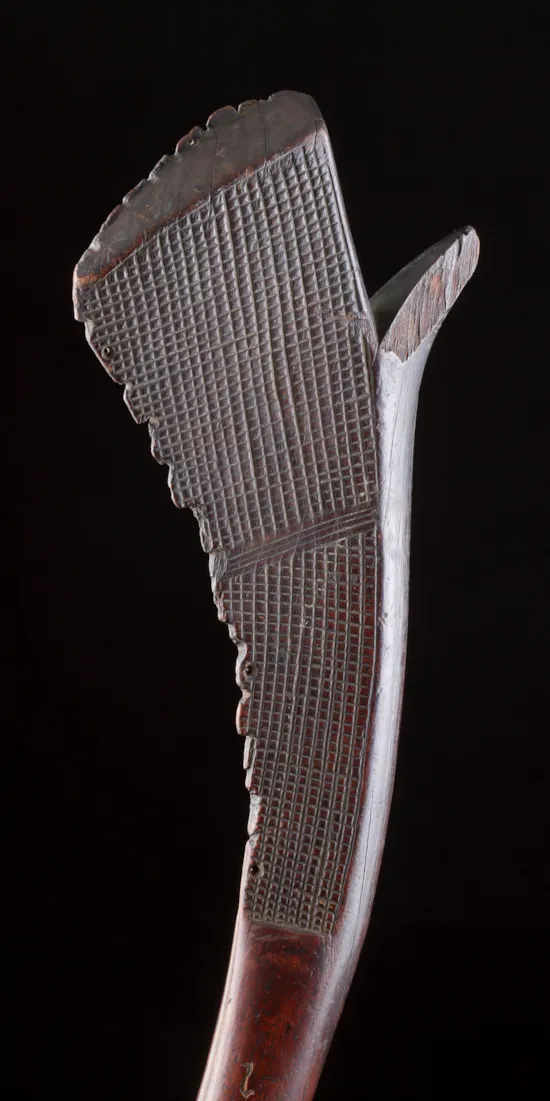
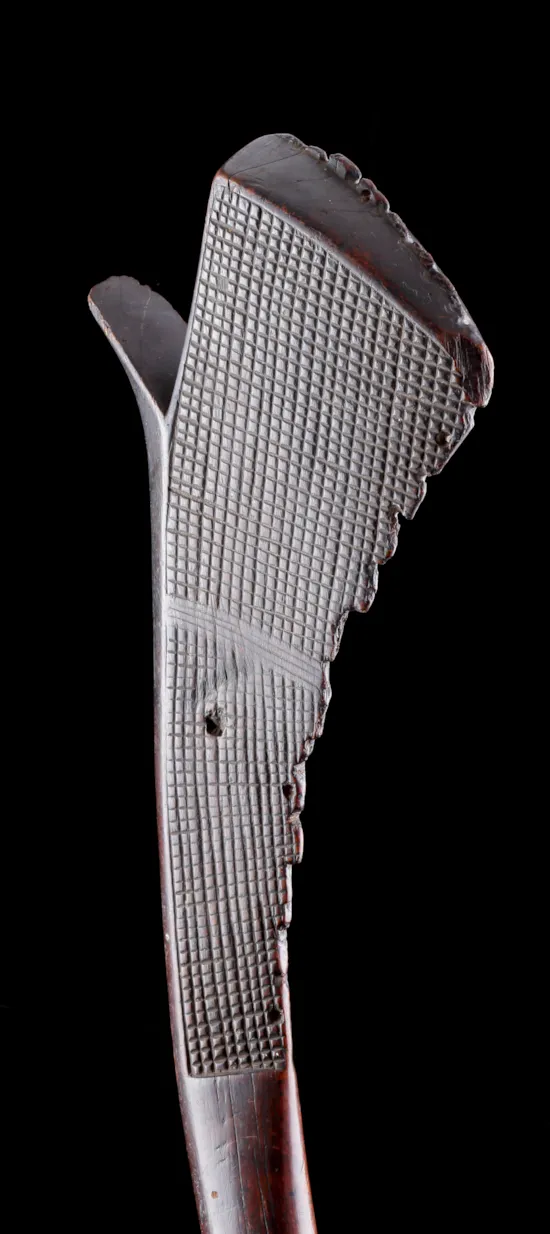








YOU MAY ALSO LIKE

